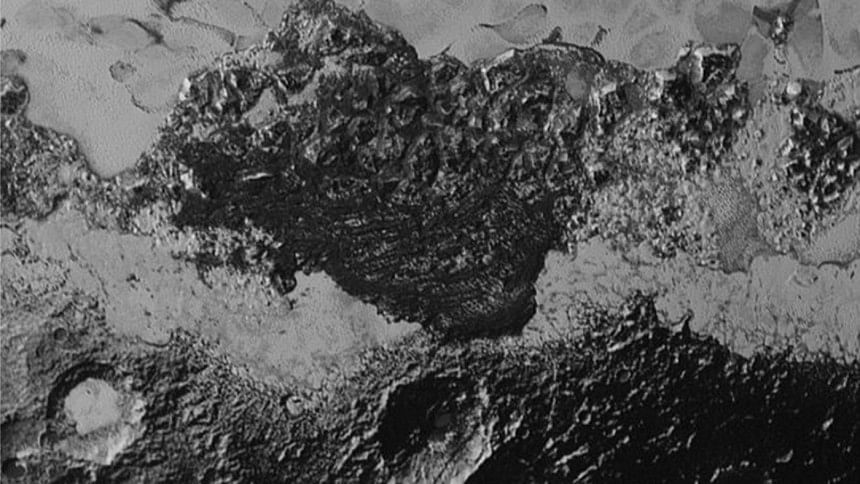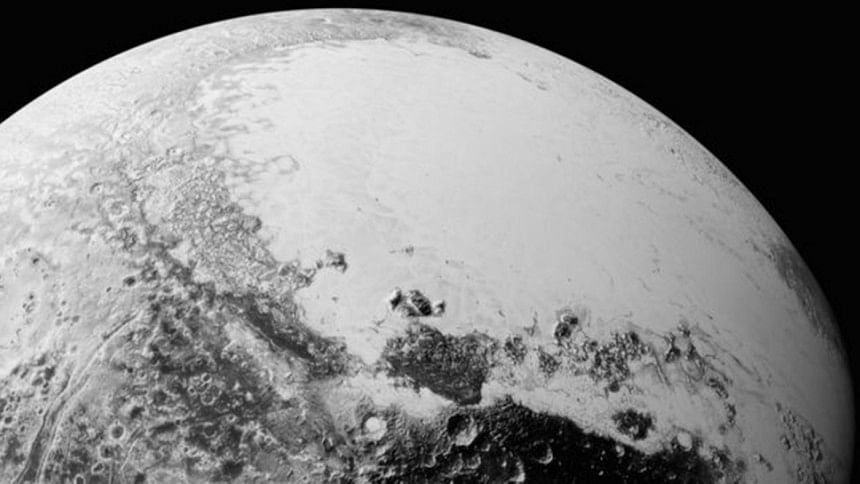New Horizons resumes image return

New pictures have been released from the New Horizons probe's flyby of the dwarf planet Pluto.
The spacecraft began a year-long data dump last weekend, allowing scientists to resume their analysis of the far-off world's intriguing terrains.
The latest set of images includes what appear to be dune features, carved valleys, and yet more ice flows.
Mission researchers got only a brief preview of data immediately after the 14 July encounter.
The return of imagery is now pretty much constant.
This means the team will in future be releasing views, and their interpretation of them, on a regular basis.
It promises to be utterly fascinating, says principal investigator Alan Stern.
"Pluto is showing us a diversity of landforms and complexity of processes that rival anything we've seen in the solar system," the Southwest Research Institute (SwRI) scientist said in a statement.
"If an artist had painted this Pluto before our flyby, I probably would have called it over the top - but that's what is actually there."
New Horizons acquired a mass of observations when it screamed past the 2,300km-diameter planet two months ago, and most of that information is still stored on board.
We got a few compressed pictures immediately after the flyby as a taster. But this was followed by something of a hiatus as the probe continued gathering science and concentrated on returning non-image data, such as counts of energetic particles and space dust.
Now the mission has moved into a new phase, which involves the downlink of the full, stored data-set, but without the earlier high compression.
However, the vast distance to New Horizons' current location – some 4.9 billion km away – means it will take until late in 2016 to get everything on the ground.
It promises to be utterly fascinating, says principal investigator Alan Stern.

"Pluto is showing us a diversity of landforms and complexity of processes that rival anything we've seen in the solar system," the Southwest Research Institute (SwRI) scientist said in a statement.
"If an artist had painted this Pluto before our flyby, I probably would have called it over the top - but that's what is actually there."
New Horizons acquired a mass of observations when it screamed past the 2,300km-diameter planet two months ago, and most of that information is still stored on board.
We got a few compressed pictures immediately after the flyby as a taster. But this was followed by something of a hiatus as the probe continued gathering science and concentrated on returning non-image data, such as counts of energetic particles and space dust.
Now the mission has moved into a new phase, which involves the downlink of the full, stored data-set, but without the earlier high compression.
However, the vast distance to New Horizons' current location – some 4.9 billion km away – means it will take until late in 2016 to get everything on the ground.
Nasa recently selected a potential target for New Horizons to visit next.
Known as 2014 MU69, the less-than 45km-wide icy object is a billion and a half km beyond the orbit of Pluto.
Course correction manoeuvres are needed in October and November to line up the probe for what would be another flyby. New Horizons would not get to 2014 MU69 until 2019.

 For all latest news, follow The Daily Star's Google News channel.
For all latest news, follow The Daily Star's Google News channel. 



Comments